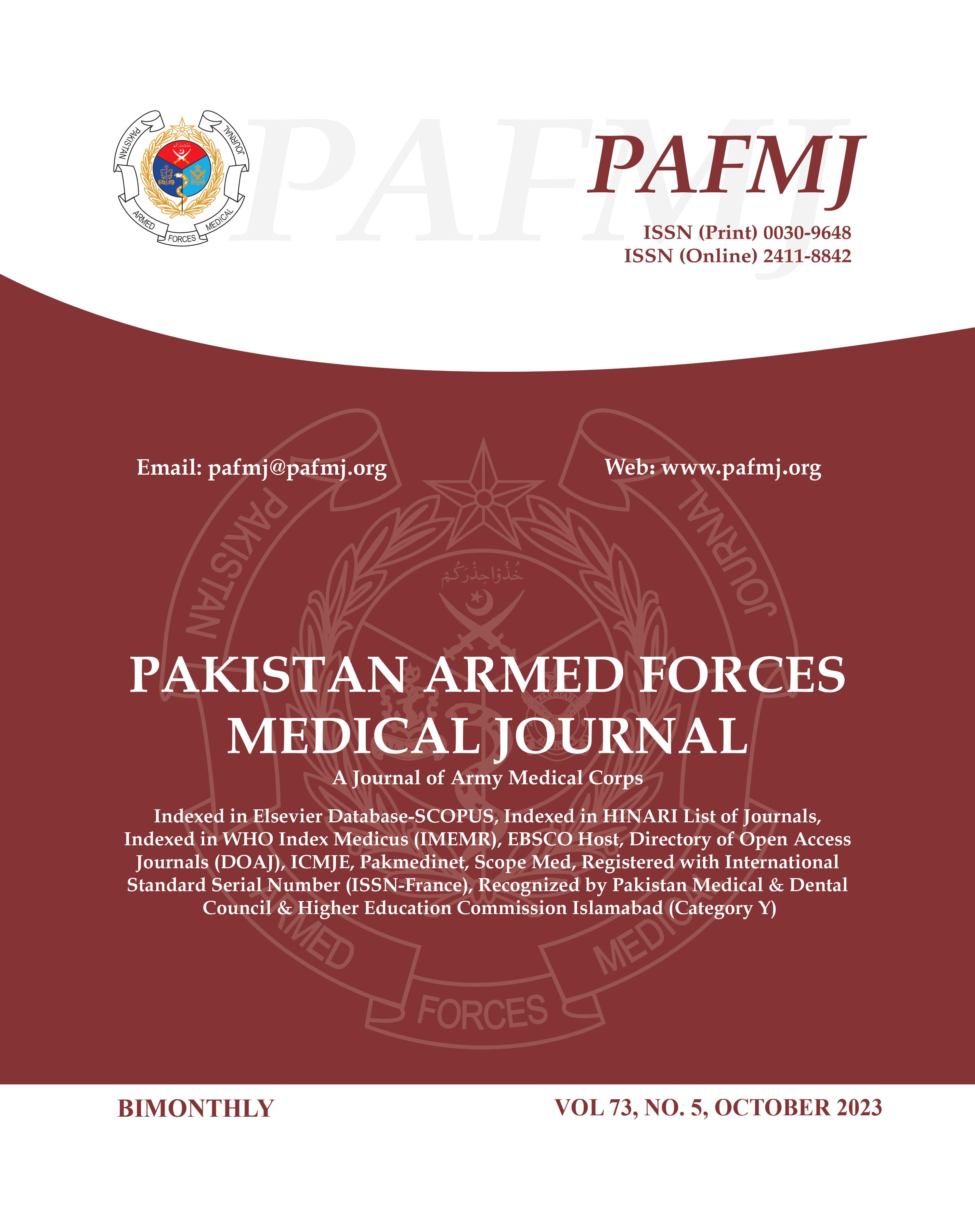The Role of Early Warning System in Predicting Severe Maternal MorbidityTaking Intensive Care Unit Admission as the Reference Standard
DOI:
https://doi.org/10.51253/pafmj.v73i5.7385Keywords:
Early warning score, Intensive care unit, Modified early warning system (MEOWS), Obstetrics and gynaecologyAbstract
Objective: To determine the diagnostic accuracy of a modified early warning system (MEOWS) for predicting severe maternal morbidity, taking intensive care unit admission as the reference standard.
Study Design: Cross-sectional study.
Setting and Duration of Study: Combined Military Hospital, Abbottabad Pakistan, from Nov 2019 to Apr 2020.
Methodology: After getting approval from the Institutional Ethical Committee, pregnant women fulfilling the inclusion
criteria were included from the Labour Room of Department of Obstetrics & Gynecology. A modified early obstetric warning system chart was used to assess all women, labelling them positive or negative as per the criteria. In case of a fatal outcome or development of severe morbidity warranting intensive care unit admission, the patient was labelled as positive. Women who developed severe morbidity were managed as per standard protocols.
Results: The early warning chart showed sensitivity, specificity, positive predictive value, negative predictive value and
diagnostic accuracy as 69.44%, 90.97%, 64.10%, 92.76% and 86.91%, respectively, for predicting severe obstetric morbidity
considering intensive care unit admission as gold standard.
Conclusion: Modified early obstetric warning system chart effectively predicts severe obstetric morbidity. It could lead to
better patient care, thus preventing severe obstetric morbidity in our local population if implemented as part of routine clinical evaluation.















